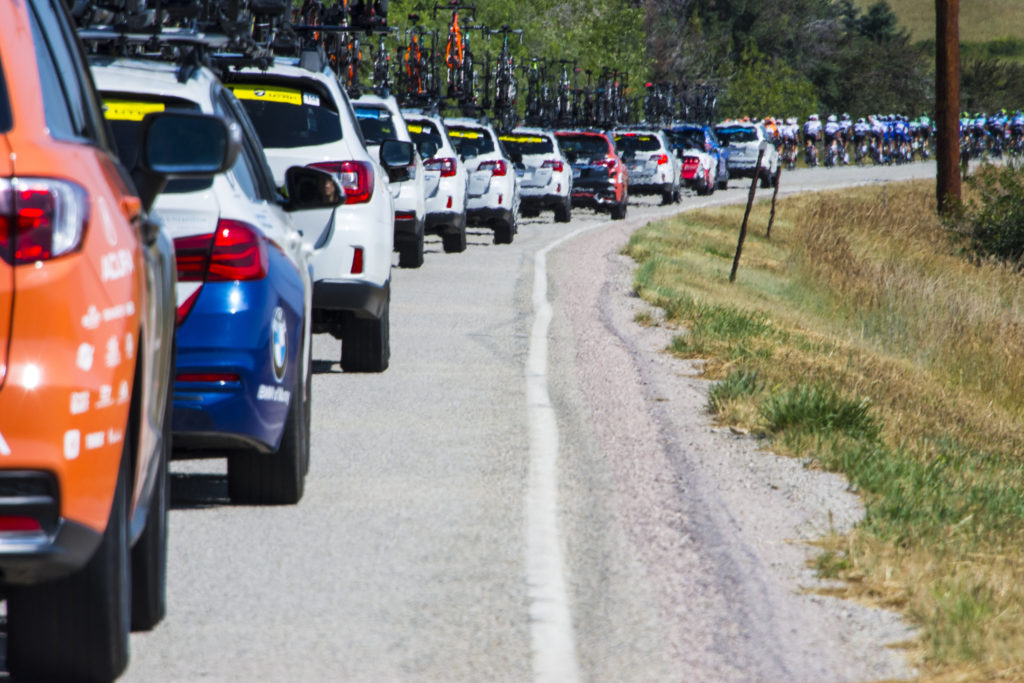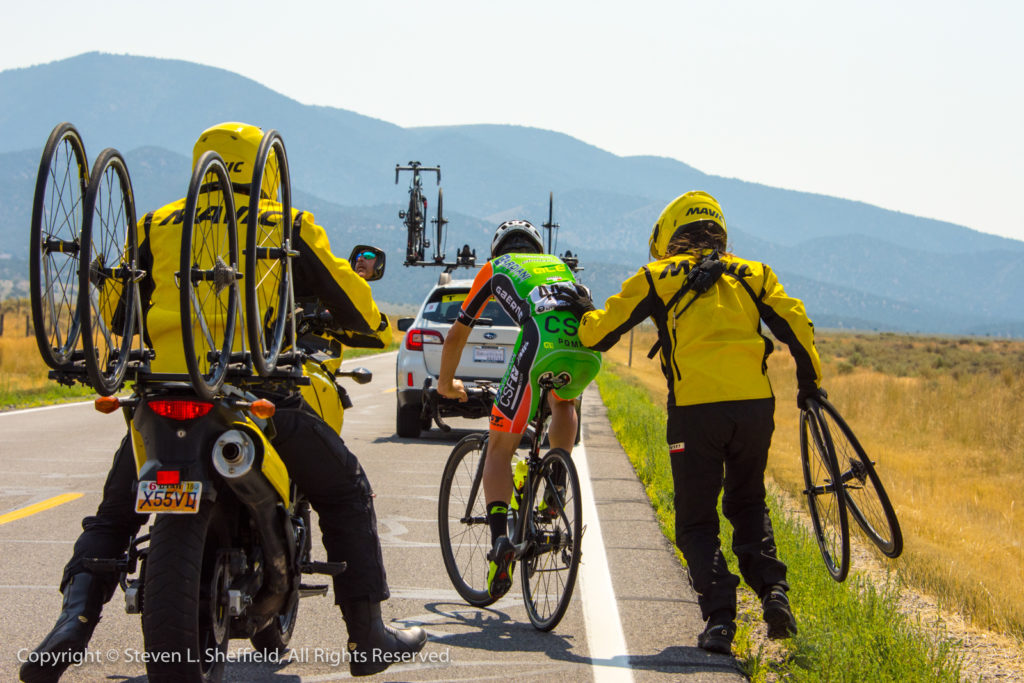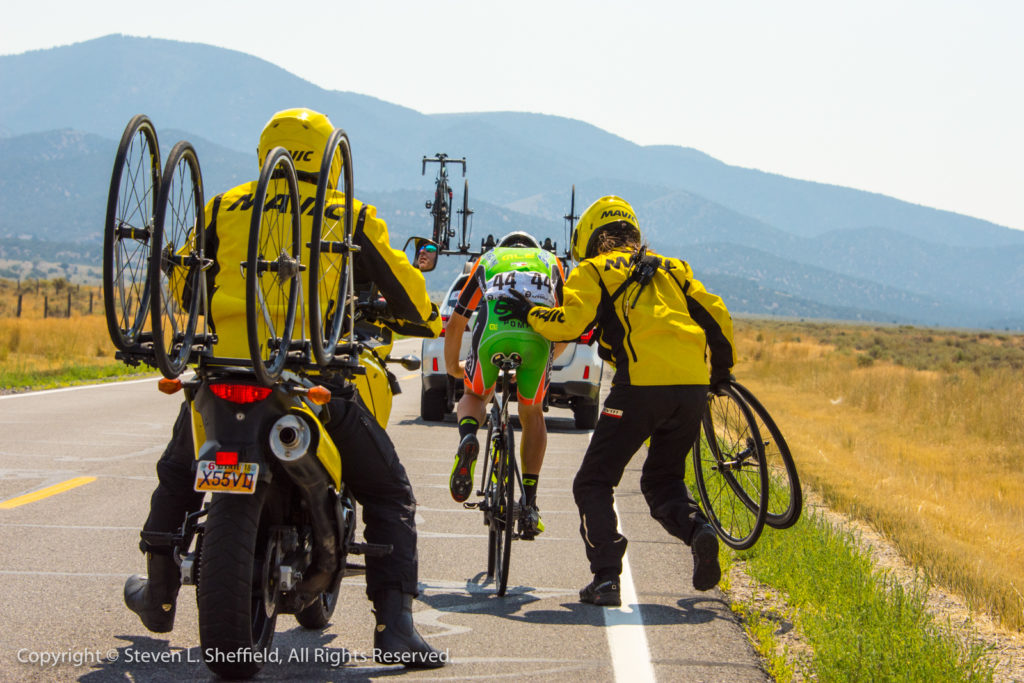
“Neutral Service” is a phrase that likely had the father of the Tour de France, Henri Desgrange, turning over in his grave when the first Mavic Neutral Service car became part of the caravan behind the peloton at the 1973 Paris-Nice. In the early years of the Tour, riders were responsible for conducting their own repairs and were forbidden any outside assistance.
Founded in 1889 as Manufacture d’Articles Vélocipédiques Idoux et Chanel, by Charles Idoux and Lucien Chanel, Mavic was long known for their bicycle components and groups, but today are mostly known for their wheels and technical apparel.
So how did that first Mavic Neutral Service vehicle come to join the caravan? It all started the previous year at the Critérium du Dauphiné Libéré, when one team director’s vehicle broke down, and Bruno Gormand (the then-current owner of Mavic) lent the director his own personal car.
Support cars were nothing new, but the ideas of having a fully professional neutral support vehicle, stocked with spare wheels, bikes, and a mechanic with enough tools to effect a wide variety of mid-race mobile repairs was good for racing. When gaps were relatively small from the breakaway to the peloton, the commissaires would call for the Mavic car to come forward to provide support for the riders in the break until the gap opened up enough to call team cars forward.
By 1977, Mavic had become the official Neutral Support partner of the Tour de France. Soon, the yellow Mavic cars became one of the most widely recognized symbols in bike racing, like the maillot jaune or maglia rosa or the red kite flown at 1 km to the finish.
So why yellow? Gormond asked one of the cameramen filming the race for French television what color would stand out best, and the response was yellow and black for contrast.
At most races there will be 2-3 Mavic Neutral Service cars along with 2 motorcycles also providing service when needed.
Each car is typically stocked with 4 bikes on the roof, 3 full sets of wheels on the rear, and 1 set of wheels in the car. The mechanic always sits in the right rear passenger seat for quickest and safest egress from the car when service is needed by a rider. Typically, the mechanic will have a full portable tool chest on the rear driver’s side, and often will have the most commonly needed tools in a pouch hanging from the back of the front passenger’s seat.
Each motorcycle is typically stocked with 2 sets of wheels mounted to a rack on the rear, while the mechanic riding in the passenger position will carry another set of wheels in his hands, ready to jump off the bike to change a wheel if a rider flats.
While the drivers are often mechanics as well, many of them are also former racers with a high familiarity of how the peloton ebbs and flows, allowing them to successfully navigate the often-chaotic caravan and peloton ballet to get to the front safely when called forward. They will most often be the first car called forward when a break is established, and the last to pull out of the gap if the break is reeled in by the peloton.
On a good day, everything is quiet in the neutral service car except for the crackling of race radio, but they are always there, always ready to jump into action when the need arises.
Since the introduction of a professional neutral service vehicle at the 1973 Paris Nice, other companies have also joined the caravan in a similar position; Vittoria is at most of the races in Italy, and both Shimano and SRAM are becoming more common sightings at races, but Mavic owns the distinction of being the first and the most widely recognized.
I had the honor of riding with Mavic Neutral Service at the 2017 Tour of Utah for a couple of days. Unfortunately for telling a story, both days were relatively quiet, but I was able to capture some photos of the crew in action, as well as of the race itself from a different perspective, at the rear.
The caravan ballet is a pretty amazing thing to be a part of, especially when it’s happening on a windy canyon road at 60mph on a descent.
Mavic’s current partnership as the official Neutral Support provider began with the 2016 edition of the Larry H. Miller Tour of Utah, and is expected to continue through 2018.
My thanks to Aaron Walker at Mavic USA, which is part of the Amer Sports portfolio of companies based in Ogden, Utah for helping to arrange my time in the cars, and to Nate Field and the rest of his Mavic crew at the Tour of Utah for being such gracious hosts.













